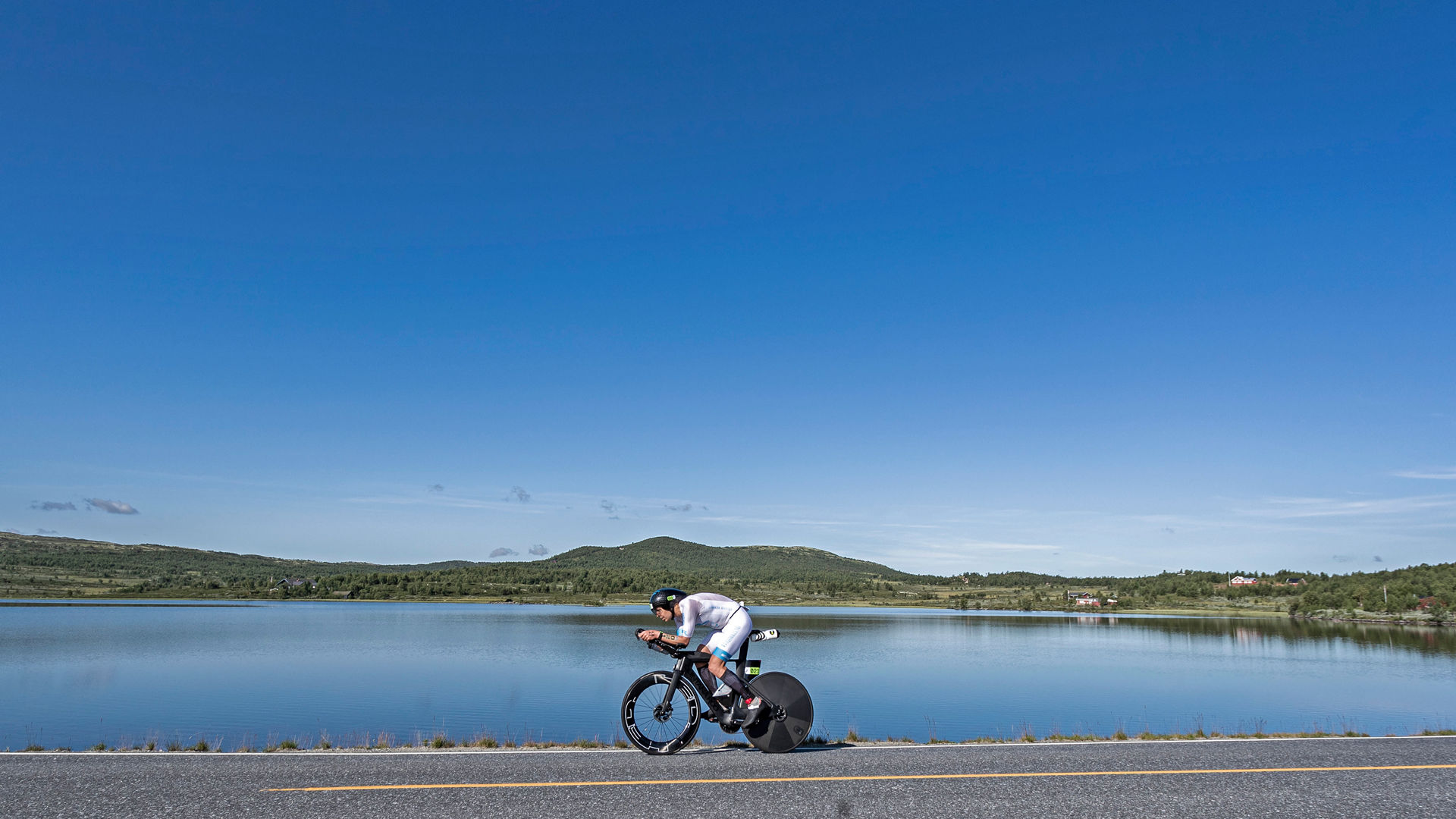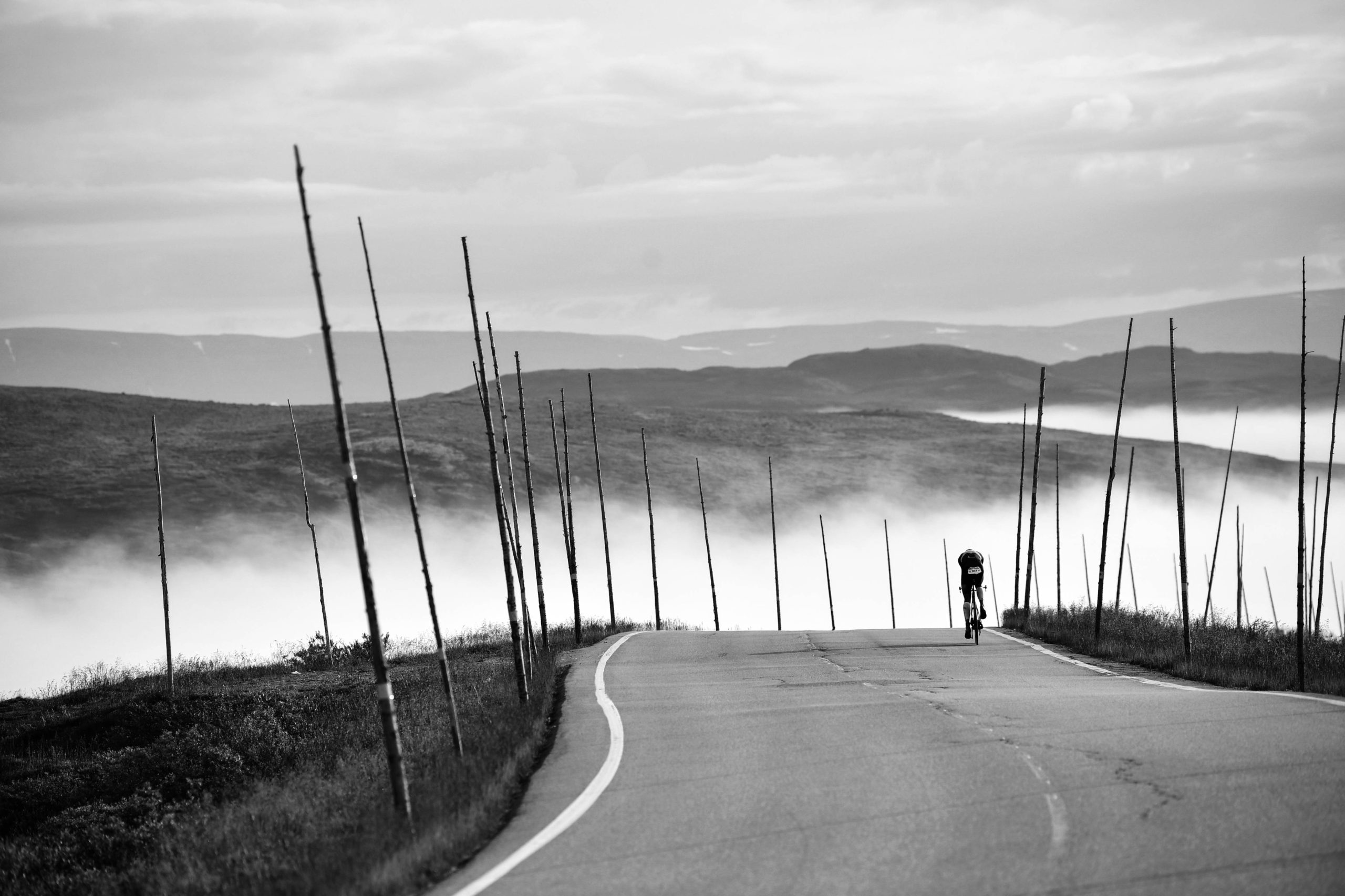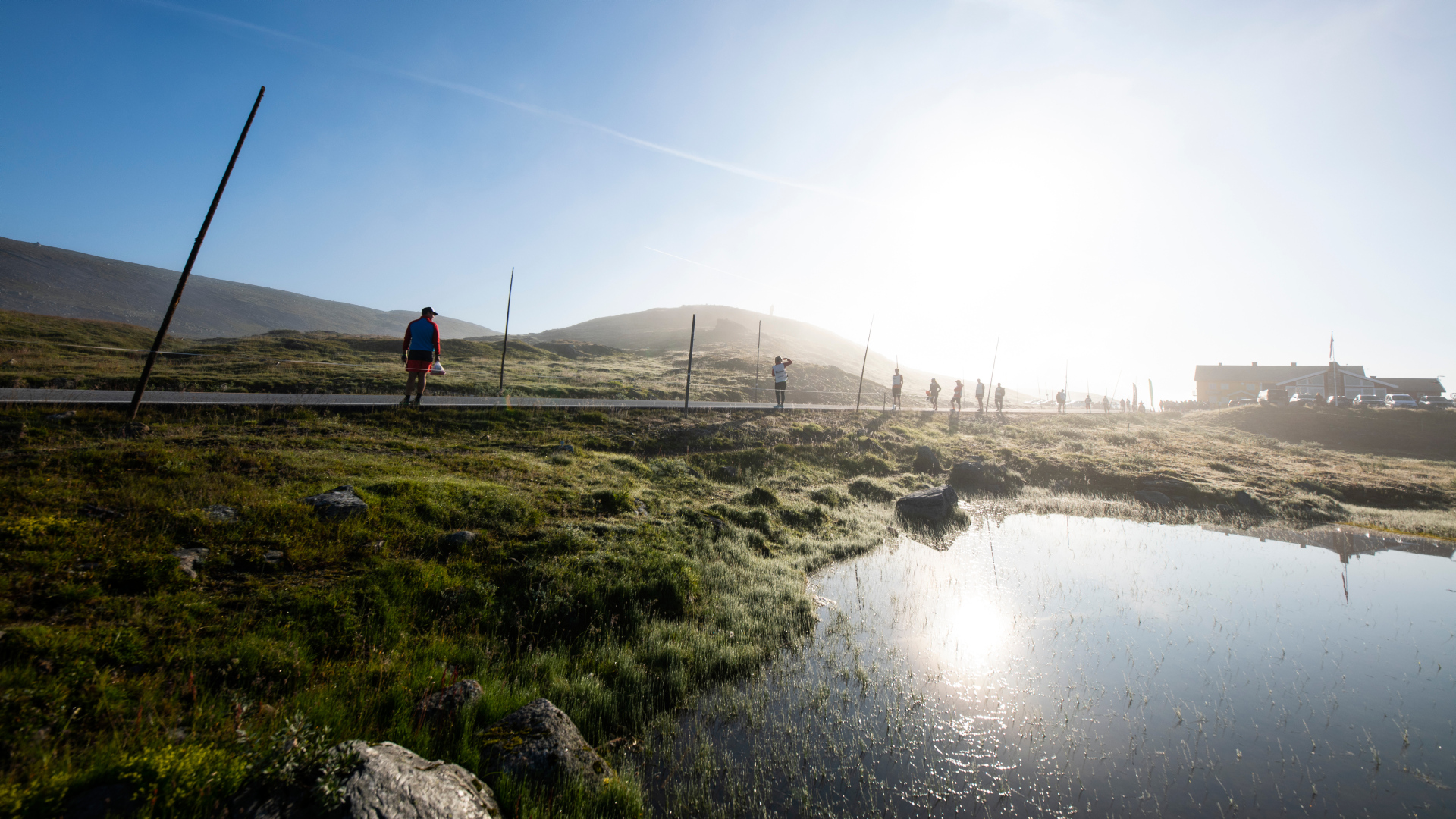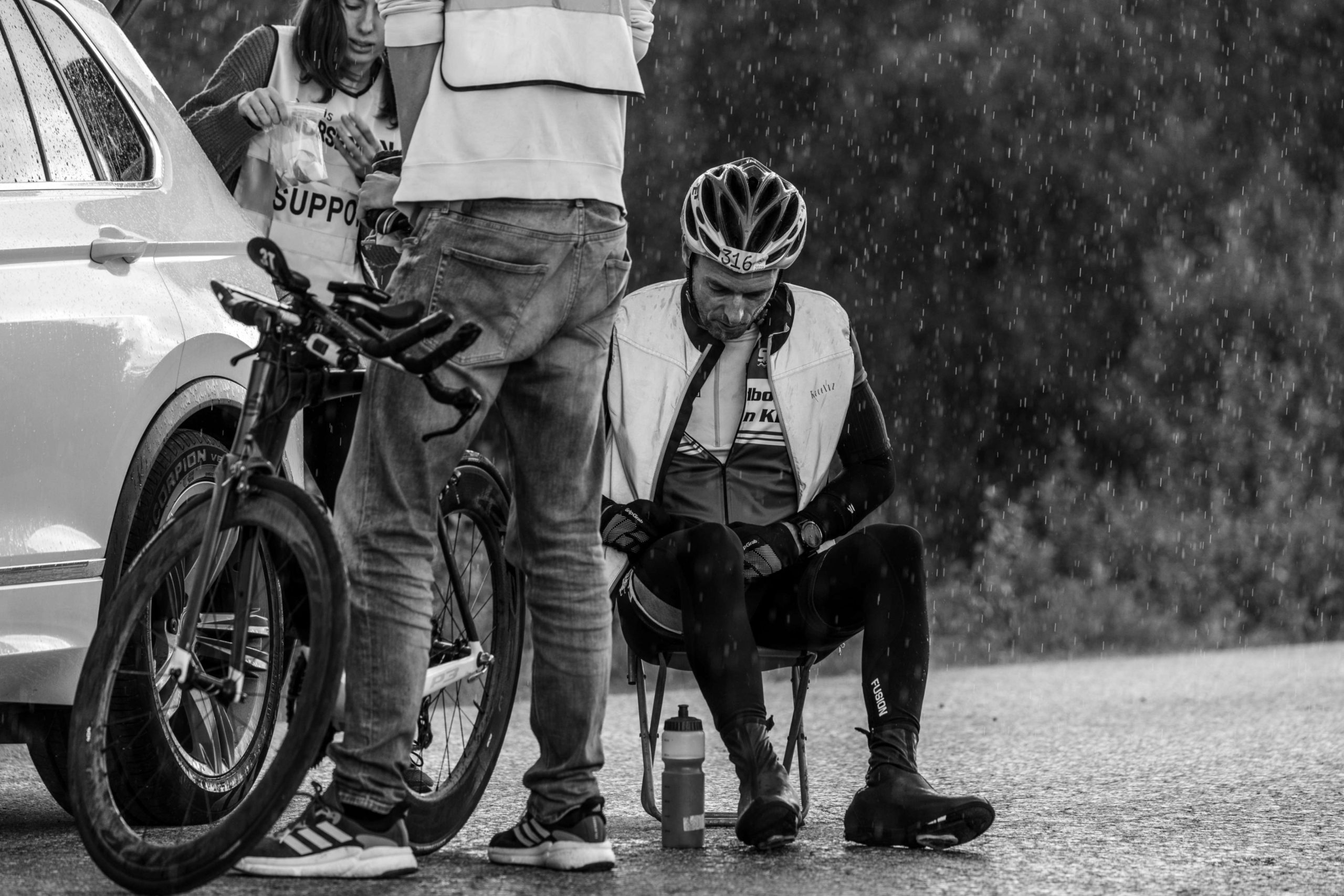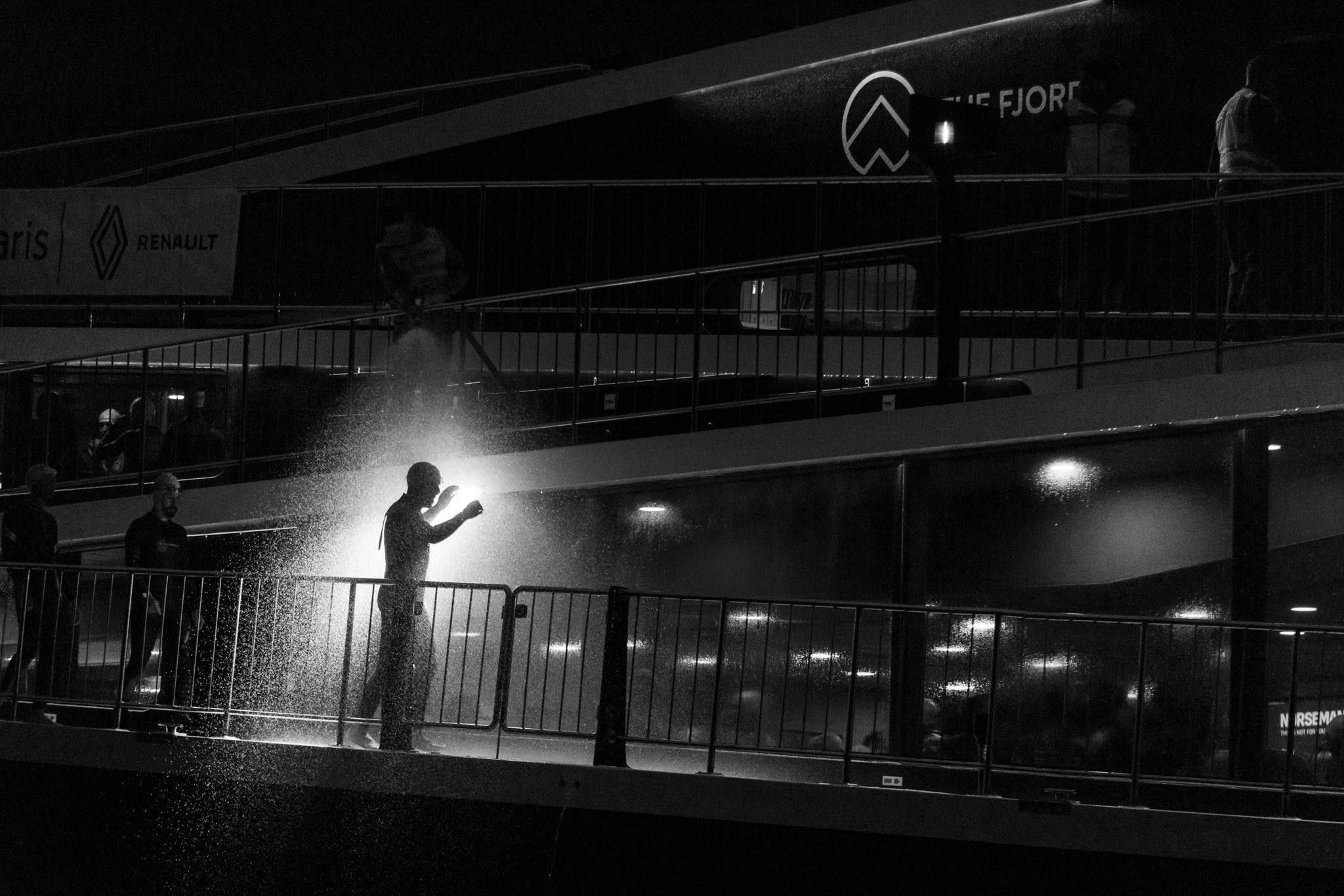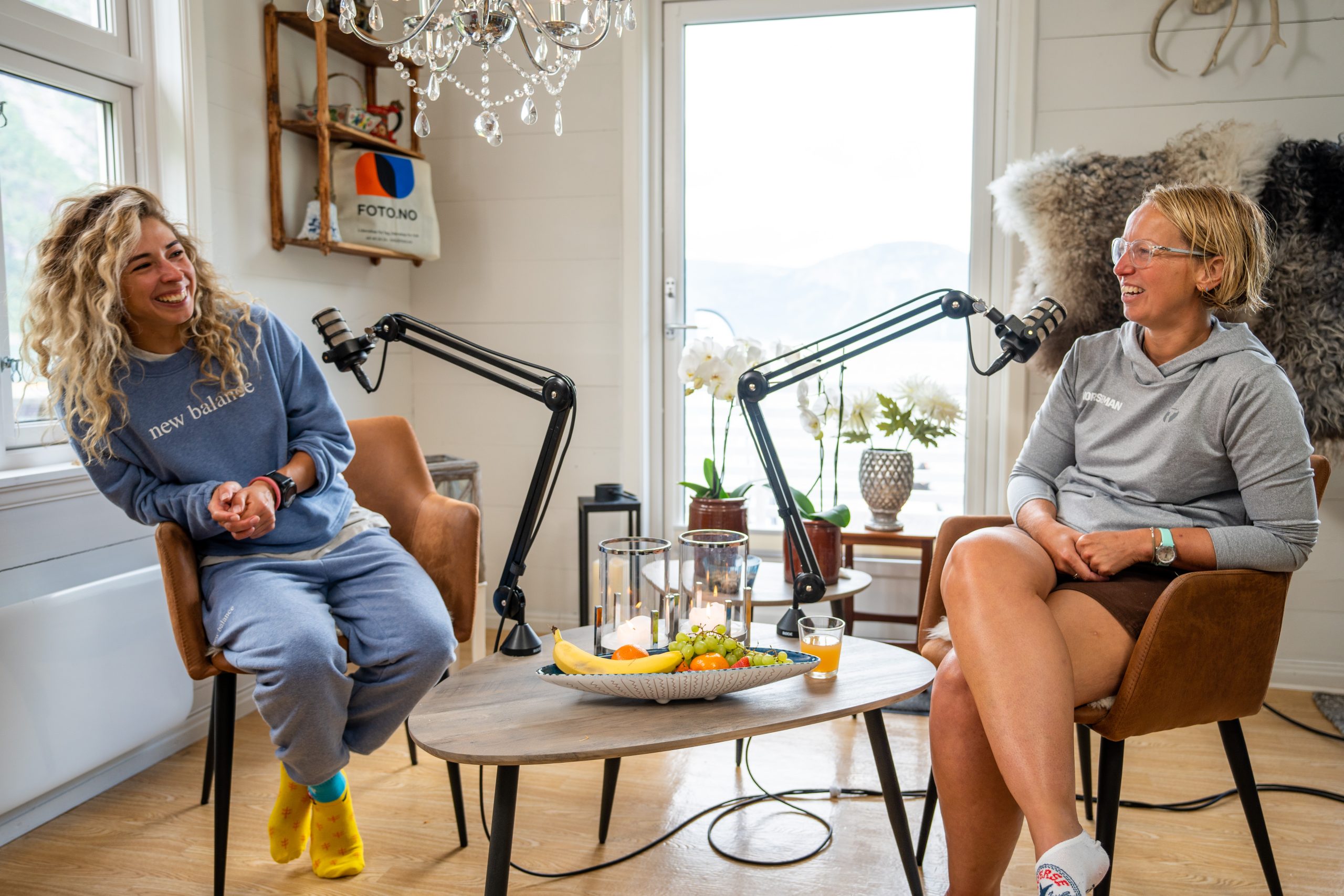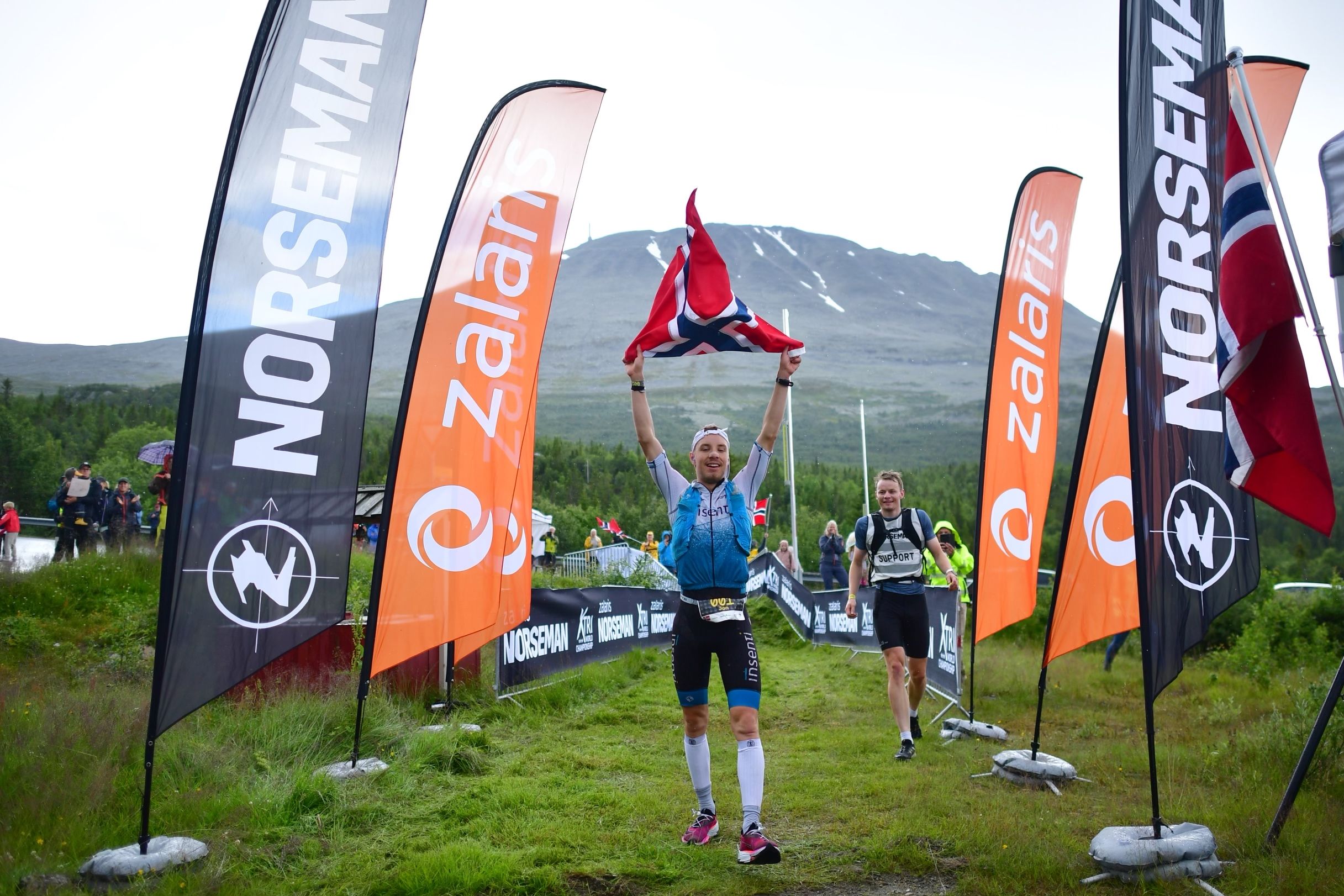Allan Hovda is a Norwegian pro triathlete, father, husband and works part-time. In 2008, Allan began his journey into triathlon, intrigued by the insanity of the Norseman triathletes. Now over 10 years later, he has won Norseman three times, holds the Ironman Norwegian record holder and holds many other achievements to his name.
In this short episode of Norseman Radio you’ll learn these three key things:
- Allan’s not-so-ordinary journey into extreme triathlon
- How to take your aerodynamics to the next level, as Allan strives to become the world’s most aerodynamic athlete
- Allan’s lessons from DNF’ing at Norseman
- And many more triathlon race tips that we can’t fit in here!
Note that this episode was recorded in June 2019. Allan came in 2nd for Norseman 2019 in a sprint finish batteling Hans Christian Tungsvik. Allans second son was born on Christmas Eve 2019.
Listen to the episode on:
- Apple Podcasts
- Spotify
- iHeart Radio (coming soon)
- Spreaker
- Google Podcasts
- Castbox
- Deezer
- Podcast Addict
- Podchaser
Scroll down for the full episode notes.
————
Adelaide: With me today is Allan Hovda.
You may recognise him from last year [2018], when he won Norseman for the third time. At the time of speaking, Allan is also the Ironman Norwegian record holder, and has many other accolades to his name. So welcome to Norseman Radio, Allan!

Allan: Hello. Thank you for the very nice introduction.
Adelaide: For those who haven’t heard of you, how would you describe yourself in the world today?
Allan: I don’t have a very good off the hip answer! I’m 32 years old and trying to do most of the things I love to do. I’m a professional triathlete, work part-time, a father and a husband. That’s pretty much me.
Adelaide: How did you start your journey into triathlon, especially into professional triathlon, as I think it’s slightly different to other athletes’?
Allan: I think my journey into triathlon as a professional is quite ordinary. I came into triathlon looking at a video of Norseman in 2008 and thinking that these guys are insane! I thought they were genuinely insane, but I was also intrigued if it was something I could do.
At the time I didn’t have the confidence or the belief that I could do Norseman, because I didn’t have any endurance sports background. I couldn’t swim crawl at all. I didn’t own a bike and I’d never done running or cross-country skiing or similar endurance sports. But somehow a colleague managed to persuade me to sign up for Norseman, so that’s how it all started.
Adelaide: How did you start training for Norseman?
Allan: When I started training for my first Norseman,I immediately understood that I didn’t understand anything about training! So I contacted someone who could help me and that was actually Fredrik Mandt, one of the founders of Norseman, who I’d seen videos of running against Hårek Strainheim, at one of the first Norseman races! Fredrik made a training plan for me and it worked out quite well.
You can listen to Hårek Strainheim on Norseman Radio talk about the beginnings of the race here.
Adelaide: How did you find the training leading up into your first Norseman race?
Allan: I had mixed feelings about it. The bike I loved, even though it was hard to ride for hours, I thought that it was really, really, really long. The running was also enjoyable and the swimming I hated!
It was extremely frustrating, because when I participate in sport in general, I usually find it fairly easy, but swimming I found impossible. It was like a near-drowning experience, so that was quite a tough obstacle to pass.
Adelaide: You hear many people not signing up for a triathlon, because they can’t swim, they’re not very good at swimming or they’re nervous around water. How did you overcome these unhelpful and negative feelings and beliefs around swimming?
Allan: For me, it took a while. I managed to do my first Norseman with a swim time of 1 hour and 20 minutes, which is by no means horrible, but it’s not fast either. So I presumed that it was okay, but I didn’t enjoy it. It was always about doing the swim, so I could actually start doing the fun stuff.

I was self-trained and didn’t have any swim technique coaches, I just used the internet to try to educate myself. It wasn’t the most efficient way to becoming a good swimmer.
My technique and swim fitness really improved when I received one-to-one swim coaching and a properly designed swim training programme.
Now I actually enjoy swimming. It’s still my least favourite discipline, but I would probably keep on swimming after retiring from triathlon – and that would definitely not have happened a few years ago.
Adelaide: Before we talk about where you are today, could you just take us through and describe to us the feelings of experiencing your first ever Norseman?
Allan: My first ever Norseman was a really good day. To be honest, I was lucky, because the water wasn’t that cold. The bike was properly hard and I think I used nearly 7.5 hours, 2 hours more than Tom Reman who won that year.
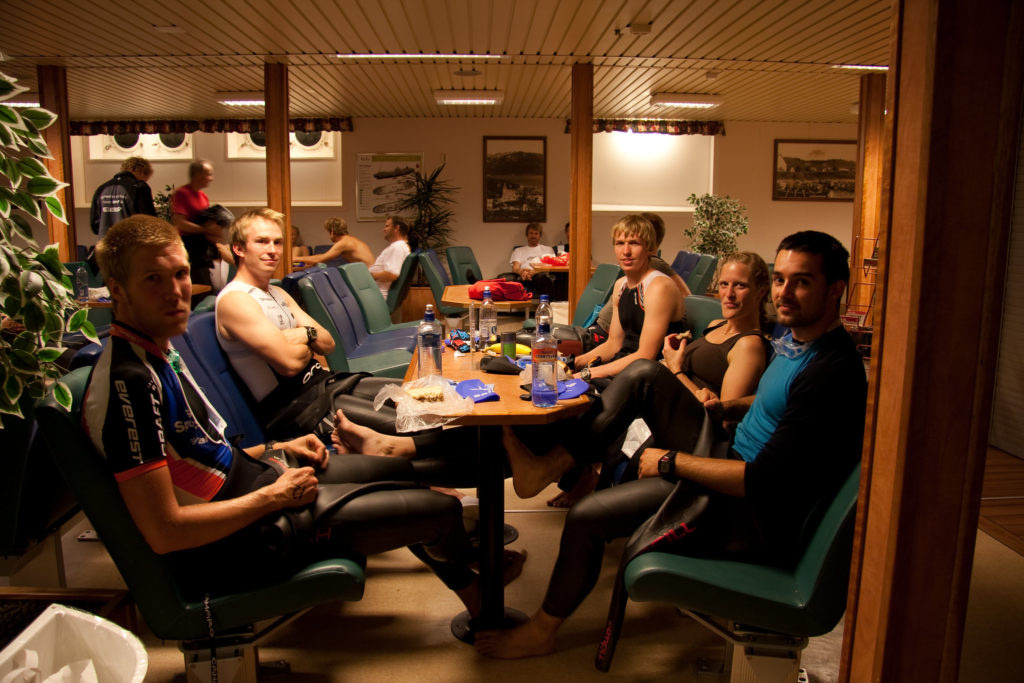
I felt fairly good during the run, I wasn’t fast, but I felt good and I didn’t have any issues with nutrition, which I think is where most people struggle, or which destroys the good feelings of a race, if you’re really sick and want to vomit, or if you have to jump out of the road and go to the toilet the whole time. It’s not a good experience.
So I didn’t have any issues with that and it was a very good day. I think I finished on top of Gaustatoppen in 44th place, 3 hours behind the winner. It felt like a huge victory. It was a really, really good feeling.
Adelaide: Can you take us through when you crossed that finish line to then doing another triathlon? Did you think at that moment that you wanted to turn pro, or that you wanted to race Norseman again? What were your thoughts after completing your first Norseman?
Allan: I signed up for Norseman to do it as a one-time event, to do the impossible challenge and that was my only ambition. I didn’t have any thoughts of doing it more, but immediately after crossing the line, it might have taken a few days, but I was really thinking, what am I going to do next?
I really got hooked on the sport.
However, I would like to say that I’m not talented. I never thought about being a professional, because I did several triathlons afterwards and I wasn’t progressing fast. I wasn’t beating anyone of notice.
I didn’t decide to go pro until 2015, which was six years later. I won Norseman for the second time and thought I had reached a level to go pro. So I was never driven by the desire to become a professional triathlete. I just did it because I liked it. I liked the challenge.
Adelaide: Most people know that you love numbers and you are all about the detail. So how did you go from the first time crossing Norseman’s finish line to then winning Norseman
twice in six years?
Allan: It seems like a quick journey, but six years is a long time. There’s no need to rush your journey, because building fitness takes time. So if you train consistently and with a well designed training programme for five years, that would do wonders for most people.
So building it basically stone by stone, starting with a reasonable training load and increasing it with a moderate amount. There’s a saying called ‘nailing the basics’, and if you nail the big things, like training, recovery and nutrition, you will go a long away. You just have to give it time.
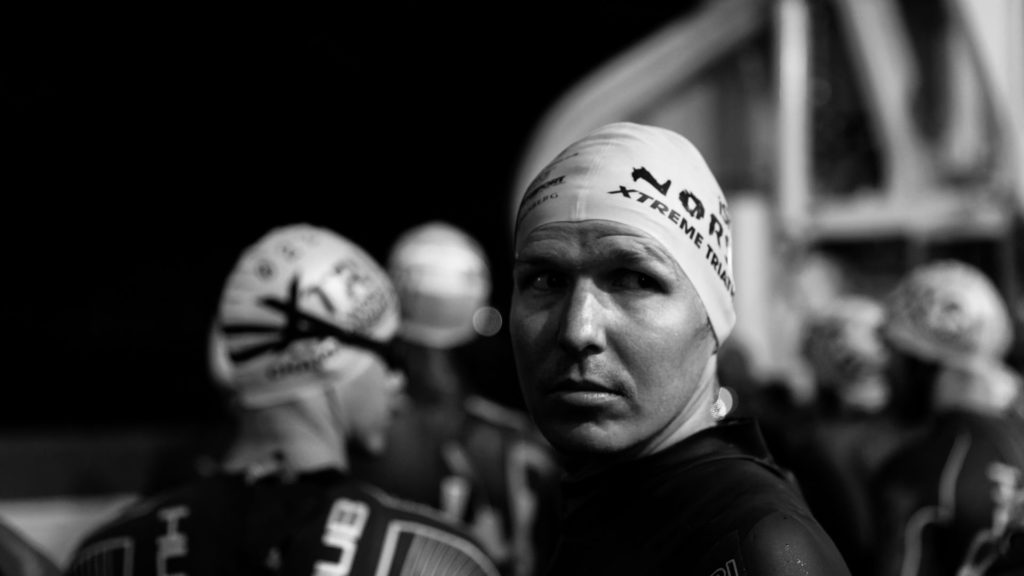
Adelaide: You said when you first did Norseman and when you first watched the video, you thought the athletes were absolutely insane. How do you see yourself now?
Allan: I guess perspectives change, because I still have this feeling that they’re insane, but now it’s for triple Ironmans, ultra runners and stuff like like that, because I’m perfectly normal. At least I feel perfectly normal! That’s probably more correct, because I don’t feel like I’m extreme in any way. I’m not especially fond of hurting myself or going into dark places and stuff like that, I feel quite normal.
Adelaide: To get better at triathlon, you embark on quests and your latest one, is to become the most aerodynamic triathlete. How did you come to choose this quest?
Allan: The project of becoming the world’s most aerodynamic triathlete is definitely outside nailing the basics.
However, when you have been doing the right things and nailing the basic things, then you’re in a pretty good shape and have the wattage numbers you can produce. I think I still have improvements in wattage output, but they’re quite close to Patrick Lange, the 2018 Ironman World Champion. So for me, there are no huge gains from improving this.
However, aerodynamically there is big potential. I don’t think triathlon has been pushed in this area. No one has used all of the possibilities or taken advantage of the technology to become one of the most aerodynamic triathletes. (does this sound right?) I think I have ways to take it to another level.
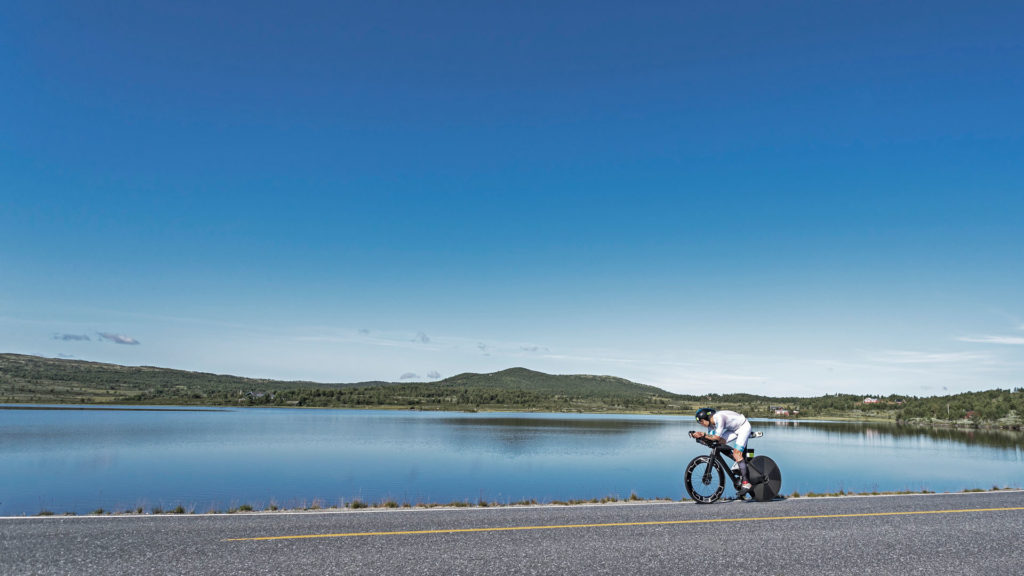
Adelaide: What are some of the things that you’ve done to take your aerodynamics to another level?
Allan: There are several things.
Firstly, it’s the bike position. You can’t isolate the aerodynamics of the bike. I’ll never be the most aerodynamic cyclist, because I’m a triathlete. If you’re a track cyclist you have other considerations and you don’t need to run afterwards, nor think about comfort and stuff like that.
So for me, having a good, comfortable and efficient position is the most important thing.
Once that is settled, you can then go into the details, starting with more obvious options to improve like the disc wheel and aero helmet.
Then you can go even deeper. I have a custom tailored Bioracer trisuit, which takes it to another level. I went into a wind tunnel with it on and received a lot of good feedback on the numbers.
I also have a project with a company who has a virtual wind tunnel, which allows me to test many things. During the last simulation, we tested seven different bottle configurations and found out that my current bottle configuration cost me 90 seconds on the Norseman course, compared to the fastest one we found.
So we’re really into the details, but we’re just scraping the surface of what’s possible. I’m a bit of a number nerd, so that’s really fun to do!
Adelaide: How does a virtual wind tunnel work?
Allan: You typically go to a bike fitter who is associated with the virtual wind tunnel company and they scan a model of you on your bike, it’s just an iPad with a scanner attached to it.
Once they scan you, they send that scan to the virtual wind tunnel company, who then do all kinds of adjustments. At the moment we’re just playing around and seeing what improvements we can do.
Adelaide: What are you going to test next?
Allan: I have a lot of things that I’d like to test. I’ve tested five different aero helmets and I want to test more. Then I’ll have a look at my front setup. I have a very special Morf TriFold bars, which you can click in and out. I saw Lars Christian Vold [2018 Norseman winner] had them the first year he really beat me in Norseman and thought ‘I really want those aerobars’! So there’s real potential there too. There’s still a lot to work on!
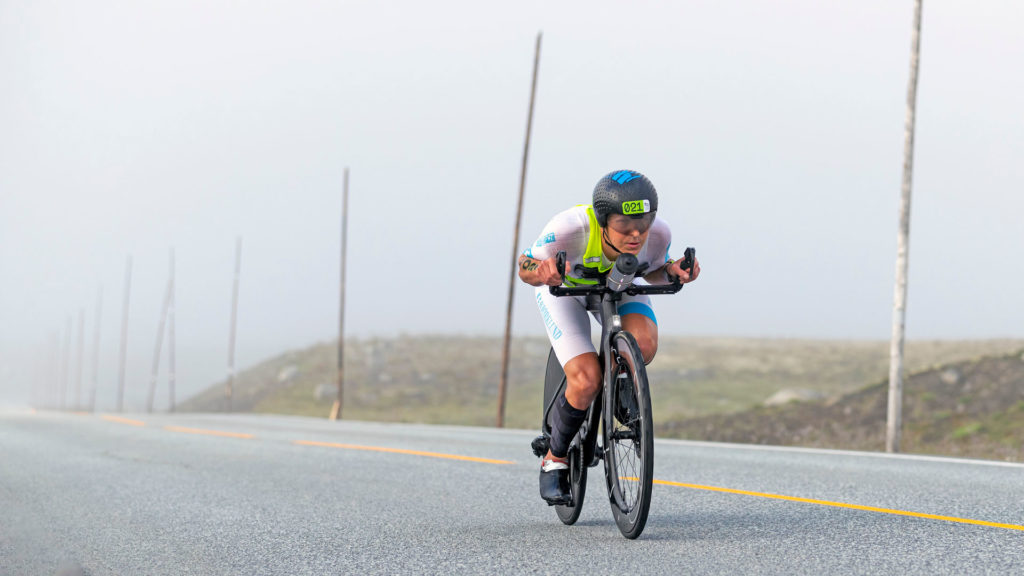
Adelaide: What would you recommend for the triathlete who is doing Norseman this year and they want to improve their aerodynamics without necessarily going into the nitty gritty of bottle positioning?
Allan: There are two things I usually see go very wrong during Norseman.
Number one, is using a road bike. Of course, if you like to use a road bike and you don’t care too much about the cycling time, then go ahead and use a road bike!
However, compared to a well fitted time trial bike, or a well fitted road bike with clip on aerobars, it will cost you between 15 and 20 minutes.
Number two is clothing. Norseman can get quite cold and it can rain. I’ve seen people wearing rain jackets that are two sizes too big, which then work against you as flags or sails when cycling!
This means they’re cycling across the Hardangervidda Plateau, where the speed is really high and the air resistance is probably 95% of the power we have to overcome, and they’re sitting there with a parachute around their body.

So proper clothing for Norseman is really, really important. You need to be really prepared for cold weather, around 4 degrees Celsius, rain and wind, but you also need to get the aerodynamic stuff right, by getting a tight fitting, warm jacket.
Adelaide: That’s really great advice and makes me think about my own cycling kit! How will you know when you’ve achieved becoming the most aerodynamic athlete?
Allan: It is difficult to know if you’re the best. I’m totally open with all of my numbers and share everything and of course, I don’t know what numbers other athletes have who don’t share their data.
However, my best numbers at the Boardman Performance Centre’s wind tunnel was .1748, which is really, really good. If any triathlete has better, then let me know. From there, I think we can go below .17.
Adelaide: I’m still very new to triathlon and to aerodynamics, are you trying to get as close to one as possible?
Allan: I should have clarified, a standard good aerodynamic triathlete is .25 and the world class triathletes are typically .22. Cody Beals, who is known for being very aerodynamic, is .205. and the most aerodynamic positions in the world, which are in time trials, are maybe as low as 1.6. So 1.0 is not possible.
My number is good, but it’s a theoretical number, as it’s produced when in a wind tunnel. This means you have to take it to the real, outside world, because I should be riding faster than I do! So that’s just something we need to overcome.
Adelaide: How do you see this affecting your cycle in Norseman this year [2019]?
Allan: I’m very excited to do the bike in Norseman this year, because I’ve made huge changes to my aerodynamic performance. I’m feeling very confident that I will ride the fastest with hopefully a 5- 10 minute margin.
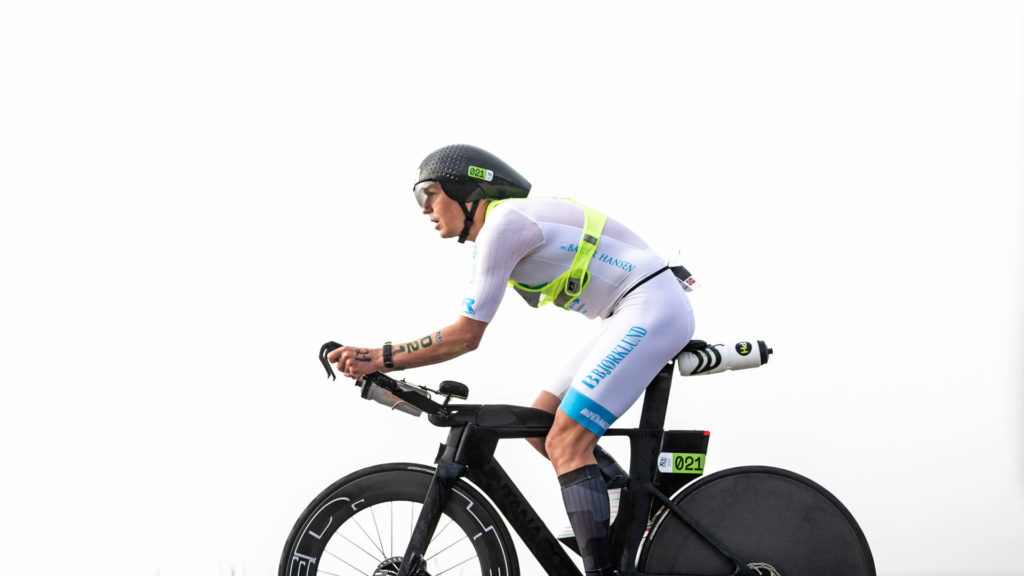
Adelaide: The other athletes better watch out! So we’ve learned that you can take your numbers down quite a lot, by getting into the numbers!
At the beginning, you said you completed your first Norseman swim in 1:20. What was your Norseman swim time in 2018 and what are your top three recommendations for triathletes who want to swim faster?
Allan: I actually don’t remember my swim time from last year, I think it was about 55 minutes, which is good, but there’s still room for improvement!
My main advice for becoming more comfortable and faster during the swim is definitely one-to-one coaching. It’s the one and only thing that is really, really efficient. I can’t see any other alternatives to it.
The reason why is that you don’t have a perception about how you are swimming. I was looking at videos of Michael Phelps and thinking ‘yeah, I swim a bit like that.’ Then when you see a video of yourself, you think ‘oh, no, not so and like why does my left arm go all the way out to the middle, why do snake my body and why do I lift my head so high when I breathe?’.
These are things that a coach would see. You can’t see it or feel it for yourself. Getting one-to-one coaching is therefore really beneficial. It’s also really important to get a triathlon swim coach, not a swim coach with no triathlon experience, because it’s very different swimming in the open water than in the pool.
Adelaide: Thanks again for that really great advice. How many times have you raced in Norseman now?
Allan: I’ve done it seven times, this year will be my eighth.
Adelaide: And you’ve won it three times. Would you say you’ve learned your greatest lessons in your triumphs or when things didn’t quite go to plan?
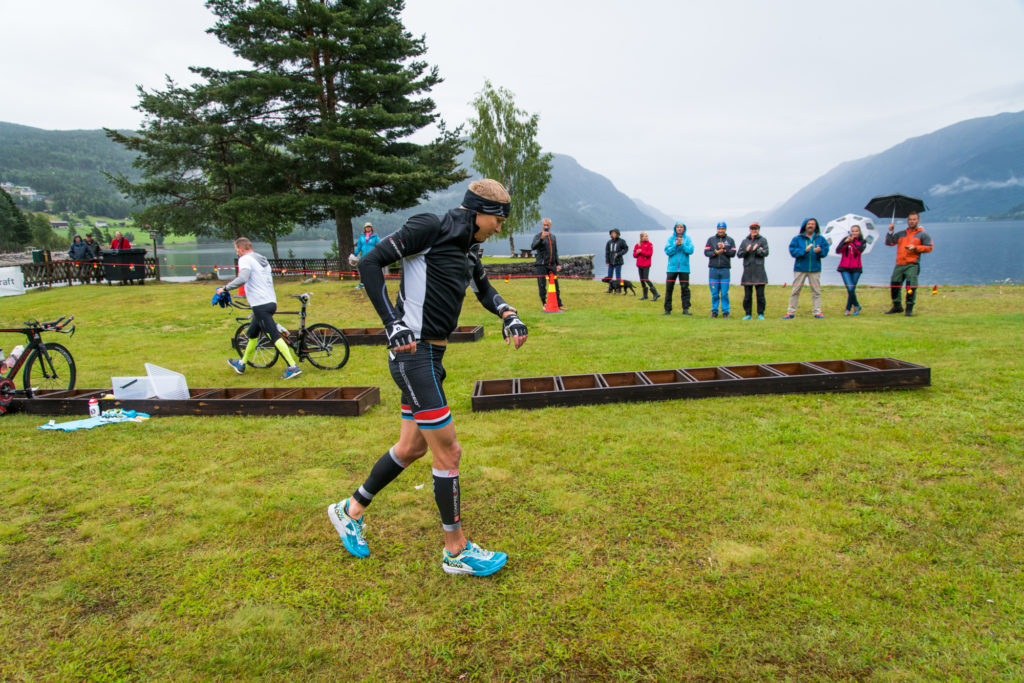
Allan: It is definitely a much better feeling to triumph. I want to triumph, but you learn so much more when you fail.
My worst Norseman by far was in 2016. I was super confident that I was going to win for the third year in a row, but I ended up in an ambulance with internal bleeding in my lungs.
It wasn’t nice and it wasn’t nice to see the fear in my wife’s face. I didn’t want to quit the race and I didn’t want to believe that it was dangerous, even when I was in an ambulance and I was coughing blood.
However, it taught me what’s truly important in life and that’s a really good lesson to get when you’re only 30 years old, so you don’t have to be 70, lying on your deathbed and realising what’s really important in life. I found out in the ambulance right there and then.
Adelaide: What did you find out to be the most important thing in life?
Allan: It’s all about the relationships you have with the people around you.

If you win Norseman, Ironman Hawaii or go out to win the Olympics, it actually doesn’t matter. It is all about your relationships with people and that is something I hope I’ll never forget. I also hope I’ll never compromise those important people in my life when trying to be the best triathlete I can be.
Adelaide: We’ve spoken before about triathlon and the pursuit of happiness, has triathlon provided you with the vehicle to create these really important relationships?
Allan: Triathlon has been very important in my pursuit of happiness and the relationships with the people around me.
The most important thing I’ve done is to stop working full-time, to start working less and having more time to train and more time to be with my family.
I love to train much more than I love money and I love my son, my wife and my friends a lot more than I love money.
It’s all about the relationships you have with the people around you.
Allan
So to work and earn less is a small sacrifice for what I get in return. However, at the moment when you have to cut your salary in half, it doesn’t feel right and it doesn’t feel good, but I’ve been truly happy with the choice ever since.
Adelaide: I found it really interesting when I discovered that you work part-time on an oil rig, which is one week on and then five weeks off. Would you take us through a typical day in the life of Allan, when you’re not working on the oil rig.
Allan: A typical day is having a lazy morning, which is usually because I have a son who wakes me up a few times during the night! We like to sleep-in for a while, have a nice breakfast and a few good cups of coffee, and then when we feel like it, we’ll go to kindergarten.
He’s on his bike and I’m on my bike, and after I’ve dropped him off, I cycle to the pool and complete one of my five weekly swims. When that’s done, I eat, change for the next training session, maybe relax, write a blog post or something and then go for a run or cycle before picking him up at kindergarten. Then we go to the beach, or for a swim in the child pool or something fun.
Adelaide: I think his helmet is definitely more aerodynamic than yours, as it’s in the shape of a shark! You seem to have a really great work, life and training balance, and you manage to go on lots of mini-adventures with your family. What advice would you give the triathlete, who is struggling to figure out how to fit training in with their work, family and friends?
Allan: I see there’s definitely a challenge to work, triathlon and family life balance, and a lot of people have a bad conscious, because when they’re training, they’re not spending that time with their family, and if they’re not training, they have a bad conscience because they’re not training.
My advice, if you have the possibility to work less, that would ease the pressure, but also trying to incorporate your family into your training sessions. You can go out for longer rides together.
People said, ‘yeah, it’s easy for you to train a lot now, but wait until you have kids.’ However, I can nearly guarantee you, that only a few kids in the world have had more hours in the bike stroller behind me than my son!
Since he was four months old, I’ve been riding with him everywhere. I’ve used him in my training a lot.
Of course I had to adapt and stop and change some diapers when he was younger, or give him a bottle of milk. However, we really got the training in and now he’s at the stage when he’ll cycle besides me on my recovery run. So that’s really nice.

Adelaide: That’s so cute! How do you feel your triathlon training will influence your son growing up?
Allan: I am extremely clear that the ambition to become the best triathlete possible is my ambition. It’s not my ambition for my son. I don’t want him to be the world’s best triathlete. I don’t want him to be a professional in sport or anything, I don’t have any dreams for him. However, I will feel that I have failed him if he doesn’t like any activity or any sport!
I’m quite confident that he will do a lot of fun activities that he likes, because we are outside as much as possible, from cycling, being on a mini scooter and playing football, to going into the woods. We do anything that he finds enjoyable. So that’s what I’m hoping to teach him, to find enjoyment in being active and doing sports, which I think is natural to all children, you just have to cultivate it.
Adelaide: Well, thank you so much Allan, we are now sadly having to wrap up! Before we go on to the quick fire round, is there anything that you would like to add in the context of which we have spoken today?
Allan: Yeah, I know that getting a slot for Norseman is something that a lot of people dream about and that often they don’t get the slot. So if you applied for Norseman and didn’t get a place, then go sign up for another triathlon!
There are many good extreme triathlon options as well. So that is highly recommended, because the year when you finally get a slot, then you’ll be prepared at the start line. So go out there and get experience, even if you don’t get a Norseman place.

Adelaide: What’s been your favourite extreme triathlon so far?
Allan: They’ve all been so special, but I must say Patagonman. It’s not solely because of the race, the race was amazing, but the place was out of this world. It looks a bit like Lofoten, but it is really nice. We had the best vacation ever in Patagonia!
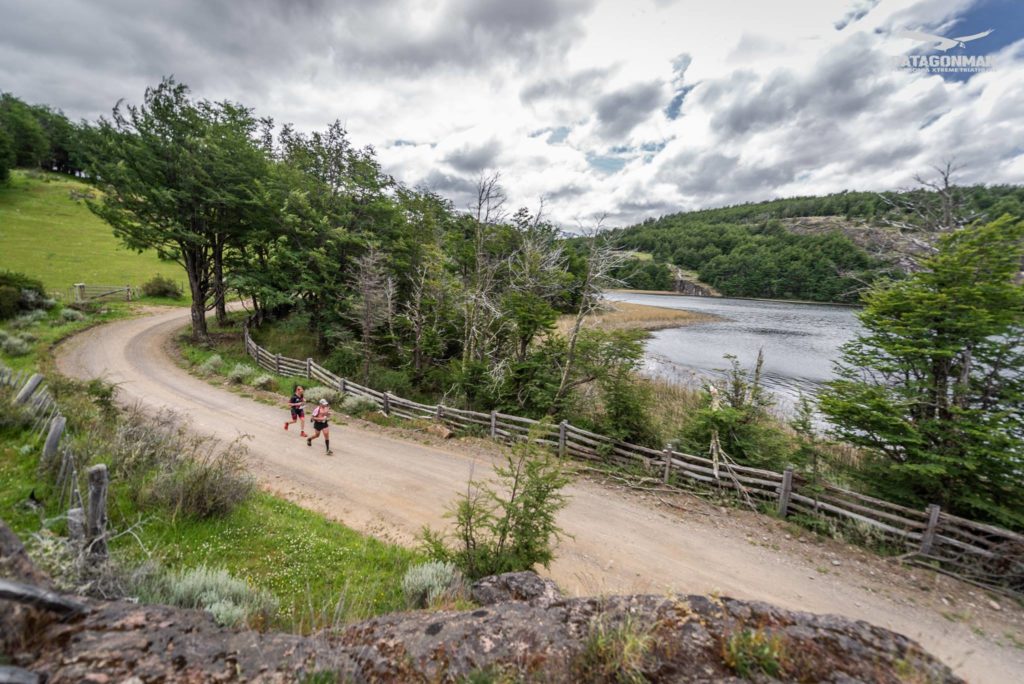
Adelaide: Amazing! Now onto the quick fire round. I hope you’re ready!
When you think of Norseman, what comes to mind?
Allan: Bad weather.
Adelaide: Which three athletes would you love to see race Norseman?
Allan: Chrissie Wellington, because she’s my biggest idol in triathlon and is just amazing.
Lionel Sanders, because he’s such a cool guy.
Kristian Blummenfelt, because I want to see how fast Norseman can be done.
Adelaide: That would be such an exciting race with all three of them!
Thank you so much for coming on Norseman Radio, if people would like to connect with you further and follow your journey, where can they find you?
Allan: I’m all over social media: Instagram, Facebook and my webpage, triallan.com I have a lot of Norseman specific advice as well, so check it out and search for triallan and Norseman, and then you see all of my Norseman articles!
Adelaide: Your blog is amazing! Everything you share is always chock full of really helpful and useful information, whether you’re doing Norseman or not.
Once again, thank you so much for coming and we look forward to seeing you race in 2019, 2020 and more!
If you’d like to follow Allan and get in touch with him, then you’ll find Allan on Instagram: @allanhov and his blog: triallan.com
——-
About Adelaide Goodeve
Adelaide is a key member of the Norseman media team and teaches pro and first-time triathletes how to sharpen their most under-utilised tool at their disposal: their brain, empowering them to achieve extraordinary performance.
Find out more about Adelaide here.
About Allan Hovda
Allan Hovda is a 33 year old pro Norwegian triathlete. Allan’s goal is to swim, bike and run as fast as possible, become the world’s most aerodynamic triathlete and enjoy the journey along the way.
Allan has competed in Norseman eight times, has won three times and came second in the first ever XTRI World Tour Championships at Norseman in 2019, achieving a PB in the process.
Find out more about Allan on his blog.
——-
About Norseman Radio
If you’d like to listen to interesting and intriguing stories around the Norseman Xtreme Triathlon and fully immerse yourself in the experience, then Norseman Radio is for you.
This podcast is not just for those who’d like to jump off the car ferry into Eidfjord and run up Zombie Hill.
You can find Norseman Radio on:
- Itunes
- Spotify ( spotify:show:6EYT3ozFRtBwW59eG3kZpM )
- iHeart Radio (coming soon)
- Spreaker
- Google Podcasts
- Castbox
- Deezer
- Podcast Addict
- Podchaser
Connect with us on Instagram, Facebook, on our website and by signing up to our email newsletter!
